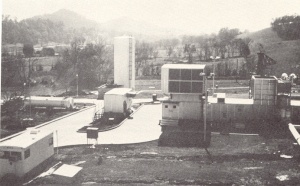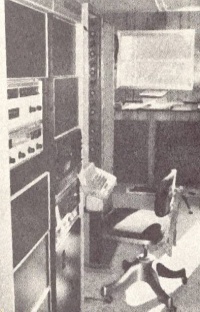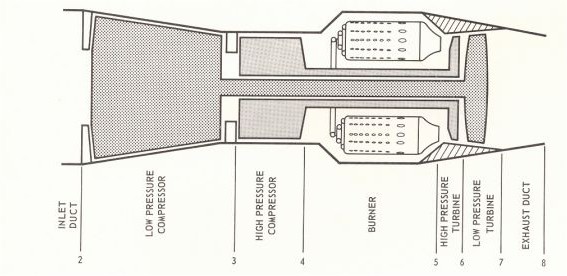 In 1972 I was assigned a project, along with another Research Engineer, Bob Venendall, that would attempt to determine if it was possible to reduce the cost associated with repairs of compressor station prime movers,jet engines, used to compress gas at five compressor station on the Columbia Gulf Transmission pipeline from Mississippi to West Virginia .
In 1972 I was assigned a project, along with another Research Engineer, Bob Venendall, that would attempt to determine if it was possible to reduce the cost associated with repairs of compressor station prime movers,jet engines, used to compress gas at five compressor station on the Columbia Gulf Transmission pipeline from Mississippi to West Virginia .
This line, composed of three large diameter pipes, two 36" and one 30", transported natural gas from offshore by using compressor station about every 90 miles to re-compress the gas for the next segment of the line. Every other station of the line operated using jet engines. The other stations were run with huge reciprocating engines. The gas was, at exit of the compressor station, about 900 pounds per square inch (psi).
The jet engines were operated until they failed. Then they were sent to a repair shop where they would be fixed and returned. The repair shop, not knowing exactly what happened to cause the failure would do a general overhaul, which would cost upwards to $100,000. If the exact cause of the failure was known, a significant deduction in the repair cost occur.
The compressor station at Hartsville, Kentucky, was selected for the study. A Pratt & Whitney jet engine would be instrumented with 46 transducers monitoring various parameter on the jet engine such as:
- Pressures, input and out to various stages of the engine.
- Oil temperatures
- Fuel line pressure
- Filter pressure
- Turbine spool speeds
- Turbine Temperatures
- Ambient Temperature
- Torque
 In order to record the transducer data we bought and modified a 20' X 10' trailer, equipped it with air conditioner, and a data acquisition computer by Digital Equipment which consisted of:
In order to record the transducer data we bought and modified a 20' X 10' trailer, equipped it with air conditioner, and a data acquisition computer by Digital Equipment which consisted of:
- programmable controller
- disk storage
- paper tape reader and punch
- digital voltmeter
- teletype for controller interface
In addition, the Research Department designed, built and wired a transducer-data-acquisition interface, including transducer power supply. When the trailer was fully modified it was towed to the compressor station just north of Hartsville.
The station employees added the necessary transducers to the jet engine, ran the transducer wires and provided power to the data acquisition trailer.
The engine was studies over a 12 month period with data collected every 80 minutes as this would just fill one box of paper tape that would then be sent back to the Research Department where I would analyze it on the our main frame computer.
The prime move, the jet engine, is identical to those being used on the jet plane in 1970s. The graphic below shows a typical jet engine with the air flow being from left to right. The numbers represent the various stages in the engine. For example, P2 is the pressure at the number 2 position just before the inlet to the engine and P7 is the pressure as the air exits the engine. The spools, the turbine axles, are N1, low pressure turbine, and N2 is the high pressure turbine.

The main parameter that we were using as a diagnostic tool was the engine pressure ratio (EPR), which is the two pressures mentioned above corrected for atmospheric pressure versus all other parameter corrected for atmospheric pressure or temperature. By plotting EPR versus other parameters, for example the exhaust temperature, T7 as shown below, we determined the under normal conditions how the engine would operate within a very same area. We found that, in general, the curve that resulted from linear regression of the data produced straight lines as shown below. The curves represented the normal operation conditions for each of six basic parameter associated with the engine with a correlation coefficient of from 0.97 to 0.99.

Thus, if the parameters were plotted on graph paper along with the curve that represented the normal operating conditions, we should be able to see the engine was having a problem and determine quickly what to do about it. This would allow the company to send the engine in for repair and tell the repair service what they suspect was wrong. This would reduce the cost of repairs which were in range of $10,000 - $30,000.
Our report recommended a simple pencil and paper method of recording six basic parameters on a once per 8-12 hour basis the could help determine the cause of engine failures and, thus, reduce the cost of repairs in the order $300,000 annually.
The report was submitted to Columbia Gulf management but was rejected as they said, "been there - done that", which we knew at the time was a complete fabrication. But it was they decision and we stood by our report.
My next project was extremely interesting and involved more travel.